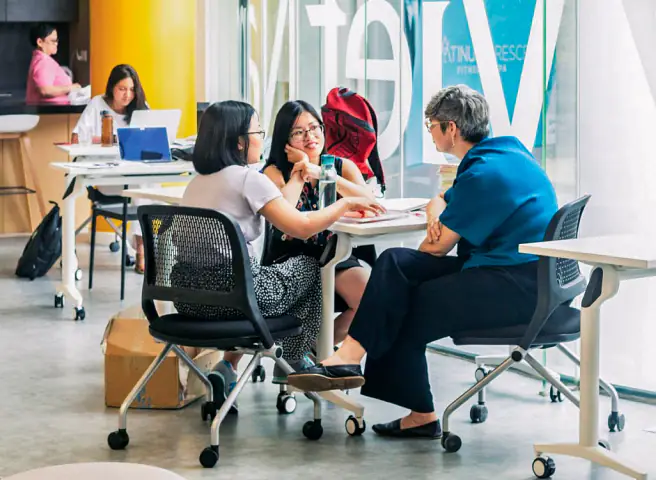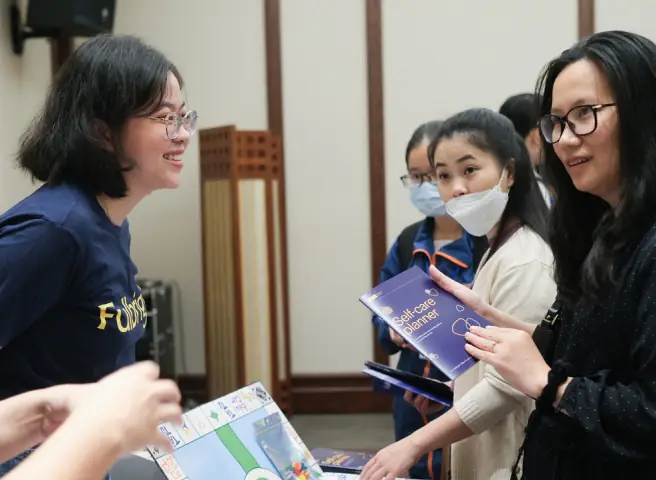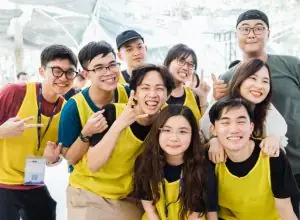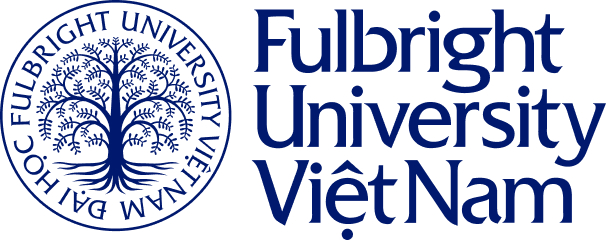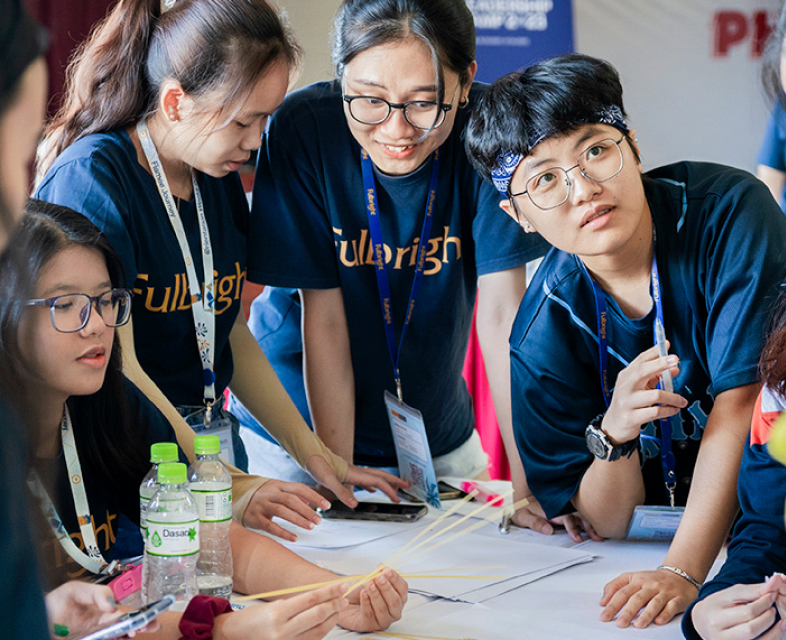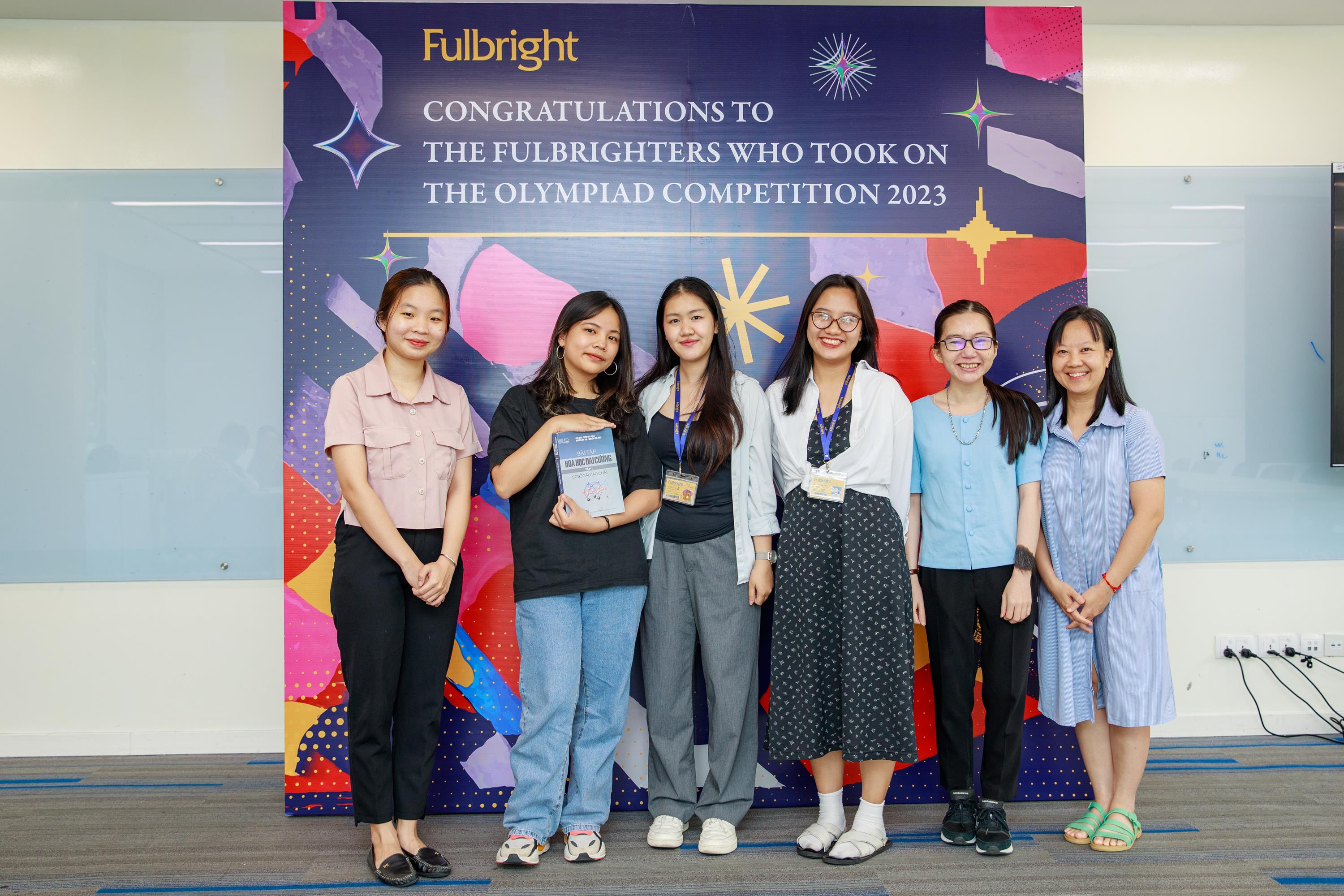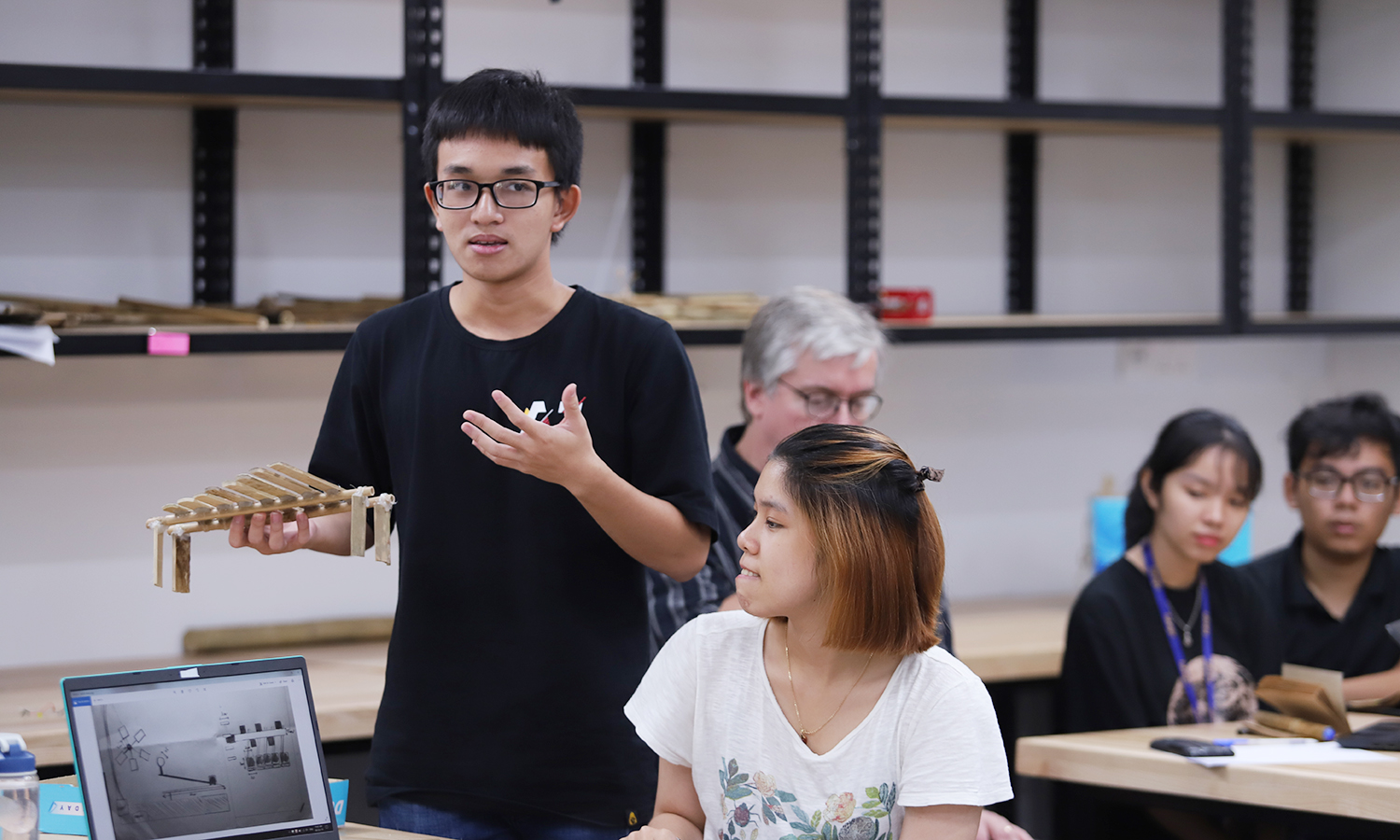
As one of the seven compulsory core courses of Fulbright’s Undergraduate program, Creating and Making equips students with the foundational knowledge of the process of designing and bringing a product to life.
Phan Binh Giang (Class of 2023) recalls the mishap she faced just a few days before the final presentation. Overconfident about their prototype, the group had no spare supply, and no remaining budget, when the group found themselves in a crisis. Their project, a melodic water fountain made of bamboo, suddenly stopped working. The electric water pump was installed inside a bamboo compartment sealed with glue. To diagnose the problem, they had to break the whole thing apart.
“This was our worst-case scenario, and it actually happened. The pump was broken, and the entire fountain could not function. We had only 15 hours to fix it, which meant all hands on deck. Fortunately, we managed to finish it at 11pm, just in time for the read-out taking place the next morning. It is in such difficult times that we learned to appreciate the value of optimism, unity and composure, which helped us overcome the challenge,” Binh Giang cheerfully reminisces.

Phan Binh Giang’s group and their product
The professors of Creating and Making, Dr. David Bruce, Dr. Nguyen Hop Minh and Dr. Sebastian Dziallas, are implementing a discovery-based approach, giving their students key concepts and process thinking, before allowing them to experiment and explore by themselves.
As one of the seven compulsory core courses of the Undergraduate program, Creating and Making teaches students how to bring a product to life from scratch. Many students, especially girls, participating in the course were befuddled when they had to familiarize themselves with hammers, chisels, saws and other tools that they thought they would never have to work with.
Yet, the course has given them many exciting and unexpected experiences.
According to Dr. David Bruce, the course is designed around an engineering philosophy: design for the society, not for ourselves. With a focus on user experience, students learn to get to the root of problems and design to accommodate the users’ needs. They have to find out what drives people, how to meet people’s emotional need and prevent hardship, and finally how to optimize their products to the users’ demands. The professors frame the classwork around different ways of organizing product briefs and agile product methodologies, from which the students can have an open experience to really investigate the society and determine ways that they can help best.

Dr. David Bruce

Dr. Sebastian Dziallas and one of his students
As the course is engineering and design-focused, the professors teach their students basic knowledge and skills by guiding them through a specific project. Dr. Nguyen Hop Minh’s objective for the course is to acquire four sets of skills: prototyping, task management, teamwork and communicating the product’s purpose to users and society.
“The expectations are learning skills that are inter-relatable to all of the disciplines, because it is a first-year course but engineering-focused. We try to give them skills that will help them in all of their courses and in fact, all of their life, even after they leave Fulbright. Being able to organize your thoughts and create new, different ways of thinking that allows you to then break out and break off into specific project elements that you can achieve really shows in the end-of-year projects that the students accomplished.” Dr. David Bruce adds.
Autonomous learning and exploring
Instead of giving inherently non-interactive lectures, the professors act as project managers who assign and keep track of goals, as well as provide support when needed. The classroom is constructed like a workshop, where the students can learn, work and explore freely.
“We have to balance the students’ workload. If they seem to be carrying out the tasks with ease, we will guide them to the next steps. Meanwhile, if they seem to be struggling with their project or lose motivation, we have to anticipate the outcome and be flexible with it. In reality, the students all exceeded our expectations,” asserts Dr. Nguyen Hop Minh.

Dr. Nguyen Hop Minh instructing his students about the project
In the first two weeks, students do a micro project as a trial run, where they acquaint themselves with the process of designing and creating, and discover their own strengths and weaknesses in order to collaborate more effectively later on. They can practice problem-solving, crisis-management, and process-testing skills to prepare themselves for their main final project.
With the final project, the professors only provide a generic prompt. The students will work in groups to interpret and execute it in their own ways, tackling different problems from different angles. Although the students can choose their product on their own, the professors have to assess and approve feasibility. If the product is overly ambitious, they will help adjust it and oversee the project, to make sure the students make consistent and positive progress.

“They asked us to create a product that can make a sound and serve a certain purpose for the community. We had four ideas: a catering machine, a button installed at intersections for pedestrians to cross the street more easily, a vehicle-blocking device to stop red light runners, and a smoke-detecting system. Two of them are traffic-related, so we decided to follow that direction. Eventually, we settled with an entirely different idea, a probing cane equipped with a proximity sensor to help visually impaired people avoid obstacles and walk more safely. It has to be better than other canes currently sold on the market,” Pham Nhat Duy explains his group’s idea.
Students need to provide substantial reasons for their choice of product. For example, to proceed with the probing cane idea, Duy’s group had to provide solid arguments regarding its necessity. Most importantly, the product needs to have a distinct purpose that can benefit potential users.
“We thought hard about whether the proximity sensor would be a significant improvement from the normal cane. In order to answer that, we conferred with Viet Hoang, a visually impaired student at Fulbright. When he confirmed the obstacle sensor was something he would love to try, we felt more confident and determined to follow through with this project,” Nguyen Thu Huyen, one of the group members adds.
According to Nhat Duy, most white canes currently available on the market are lightweight, which helps the visually impaired swing the cane easily to detect objects on their path. However, they must physically touch the objects. This is the main difference between the normal cane and their product.
“This sensor helps its user notice obstacles in front of them from the distance of 1-1.5m. It will make walking a lot more comfortable. When we first brought up the idea, the professors were impressed and at the same time concerned about how the sensor could be incorporated into the cane’s design and what the costs would be. We tried using a ready-made sensor unit, but it didn’t work like we wanted it to. Luckily, we had a team member who knows a lot about electrical circuits. He found a way to install the sensor on a cane that is still lightweight, yet functions well,” Duy recalls.

The probing cane made of bamboo
Nguyen Thanh Lam confesses, her most draining task was keeping track of the group’s Scrum Task Board, the design and project management methodology introduced in the course. Having to do it over and over again, Lam felt fatigued and began doubting its usefulness. A month after she finished the course, Lam visited a printing firm where she came across a familiar sight – a Scrum task board.
“Looking at the board, I could immediately see the entire company’s workflow, the tasks being carried out and the individuals in charge. At that moment, I understood why it was so important.”
Learn from mistakes and iterate
Making mistakes, changing plans, testing and failing are what every single student of Creating and Making has to go through. Errors and failures are inevitable in this class. Thanh Lam expressed her gratitude for her professors, who have always been patient with the students and encouraged them to overcome challenges and refine their products. Learning from mistakes help students absorb the lessons better.
“We were constantly improving our product so that we could present an optimized final version. We perfected it by gradually eliminating flaws. At the printing firm’s product development department, they talked about testing and revising their products every day. I could see how our professors prepared us for the future workplace,” Thanh Lam admits.
According to Dr. Nguyen Hop Minh, the professors do not expect all of their students’ projects to be totally successful.

With Creating and Making, testing and failing are inevitable
“The students are trying their hand at making a real product, and every real project has risks. We had already anticipated that by the end of the course, some groups might fail to finish their product, or end up with a flawed prototype. That should not be a big problem. What matters is what they can gain from it. This is but a foundation course, our students have many more ahead of them and a whole career to learn and mature from, but they must have fundamental knowledge and skills to be confident that they can do it. In this case, we also expect that the final product might be drastically different from the original sketch.”
Nguyen Phuong Thao, one of the students says all subjects at Fulbright require them to work in groups. However, teamwork usually accounts for only 50 per cent of other courses, while personal essays take up the remaining 50 per cent. With Creating and Making, it is entirely team efforts from the beginning till the end. It demands various skills, among which communication is key. Unless they can make use of each member’s individual strengths, they will not be able to get satisfying result, but neither can they if everyone wants to be the leader.
“Throughout the course, I had to be careful not to let my team members fall into demotivation. I must not allow myself to bring negative energy to everybody. Most importantly, I had to bring my teammates together to work collaboratively,” Thao remembers.
Although he had little aptitude for natural sciences and engineering subjects, Dang Nguyen Huong Duong has picked up a very useful tool from this course: the Scrum task board.
“Everyone, not just engineers or inventors, can utilize this board. I can totally use this in other assignments and projects, including those not related to engineering.”

As Nguyen Thanh Lam has recognized, thanks to Creating and Making, the students have developed a very interesting habit to wonder “How is this made?” whenever they see a compelling item. Now that they understand how much work goes into making every single item they use in everyday life, no matter how small it is, they have come to appreciate the products and their makers even more.
During the 8 weeks of exploration, Phan Binh Giang truly enjoyed learning how to work with tools that are conventionally associated with masculine craftsmanship, like saws, hammers, drills, and cutters. When she was a high schooler, Giang used to feel intimidated by such tools and always had to ask for help from her male classmates. She can now repair household appliances by herself whenever they are out of order.
“The course has helped me gain tremendous self-confidence and self-love. I don’t have to rely on anyone anymore,” Binh Giang proudly says.
Xuan Linh – Anh Thu
